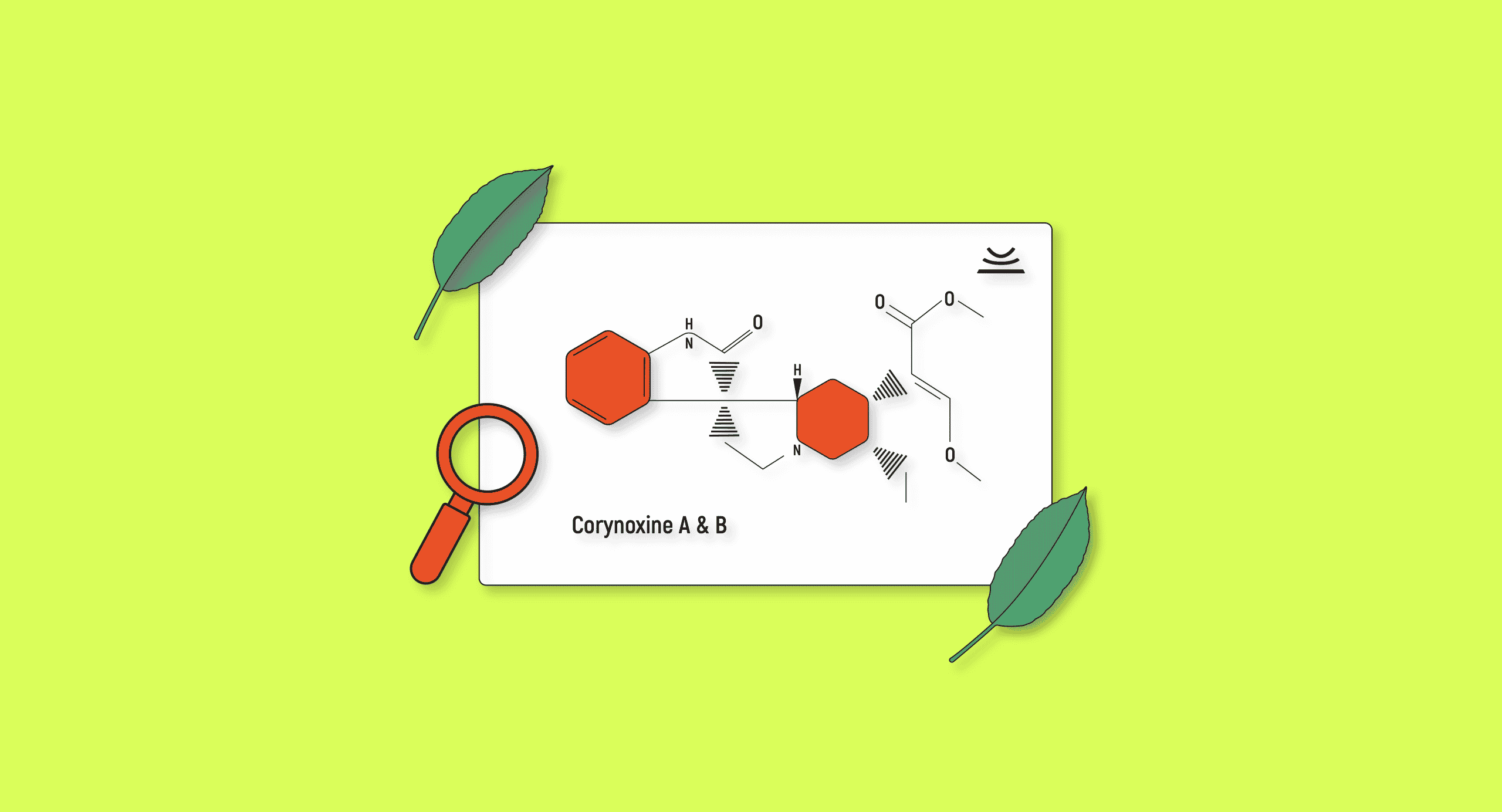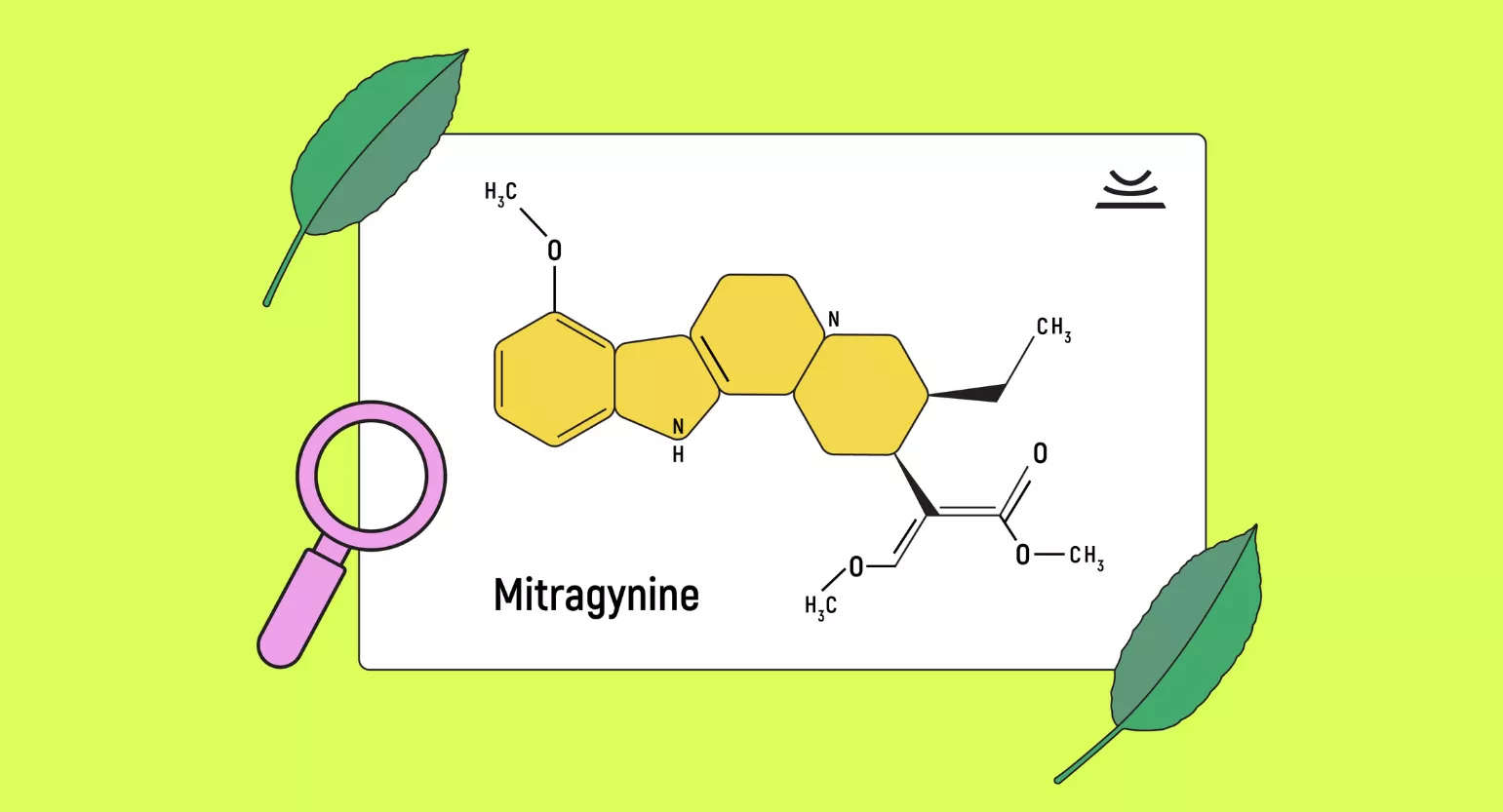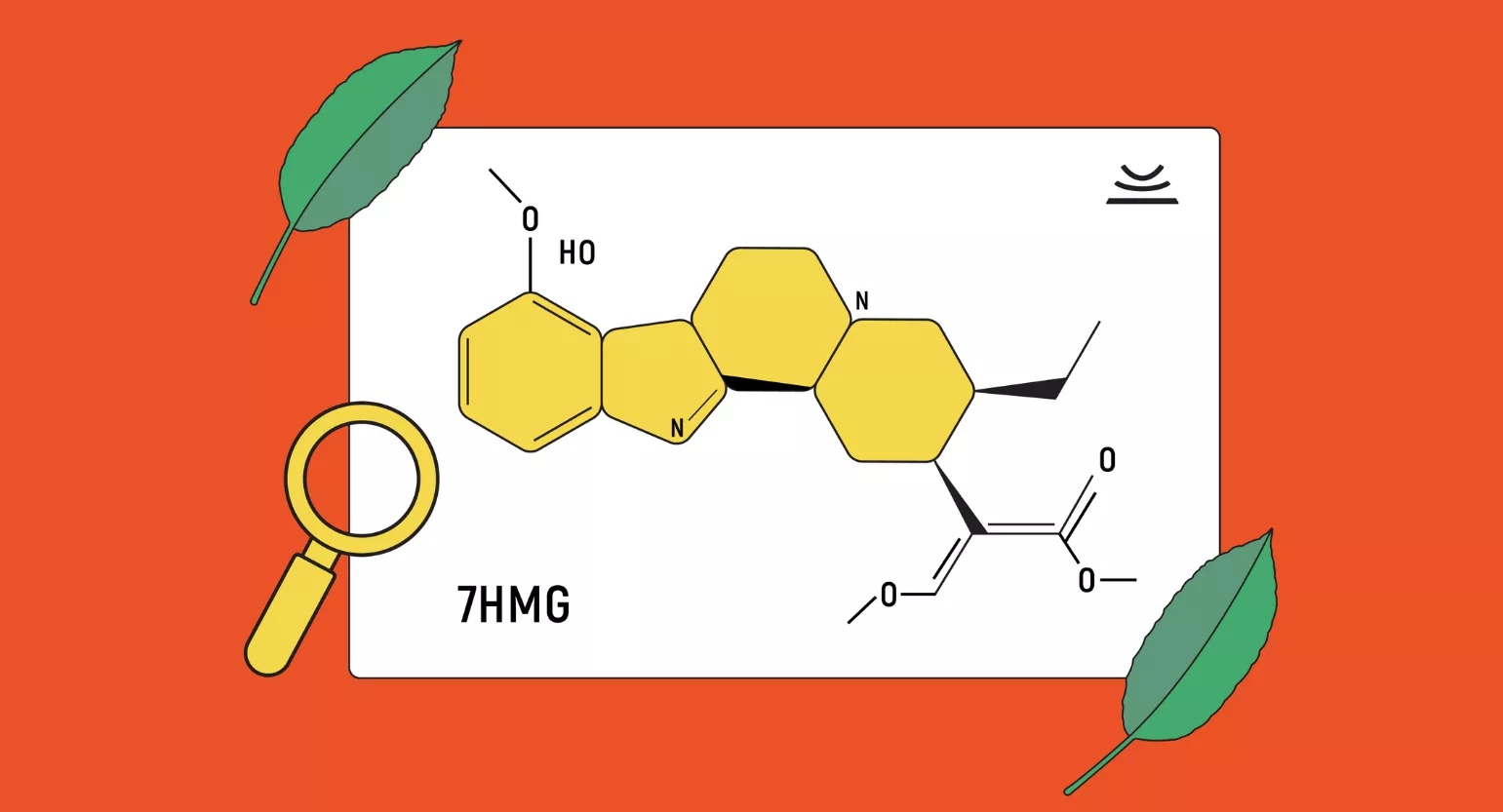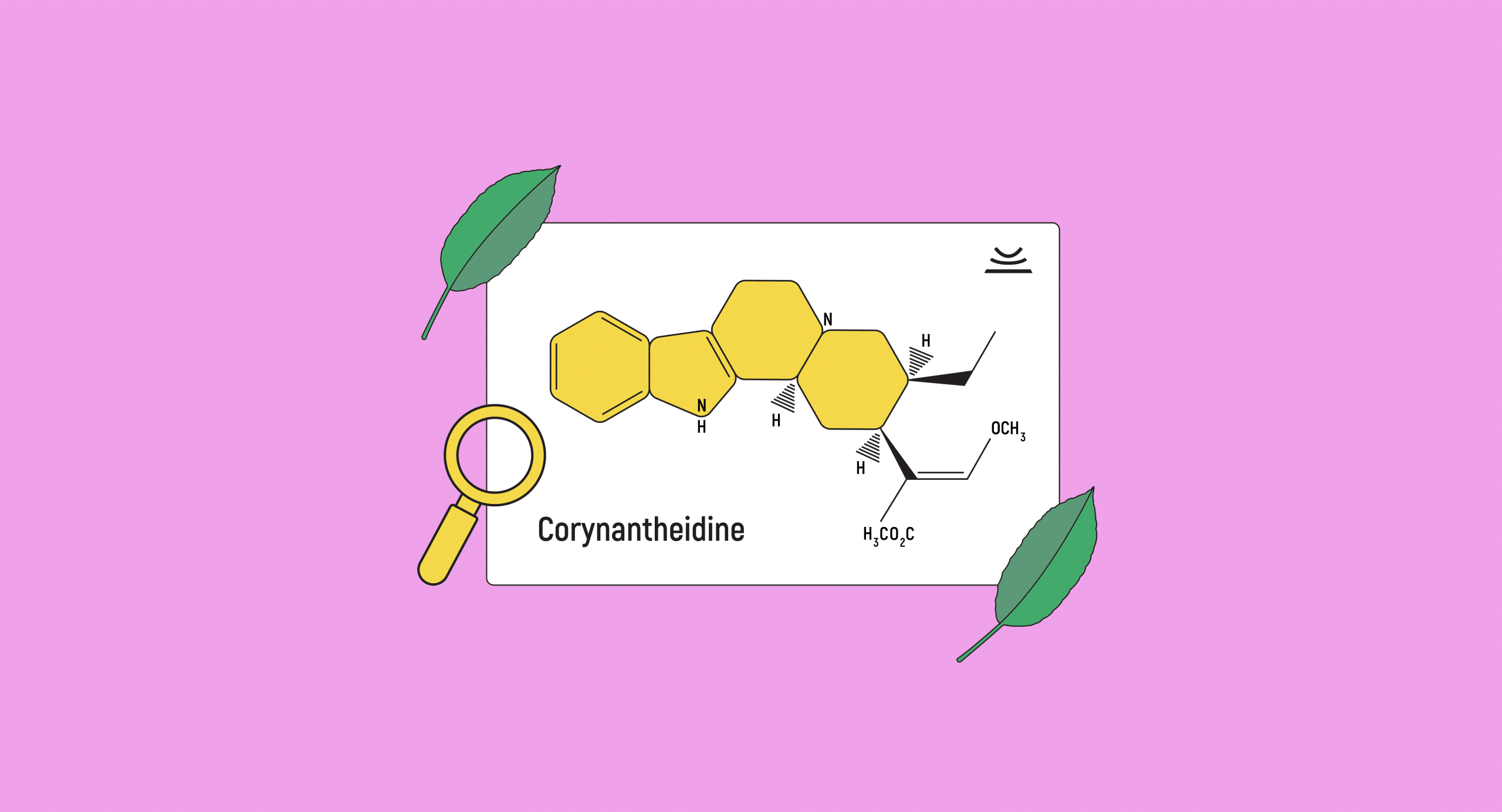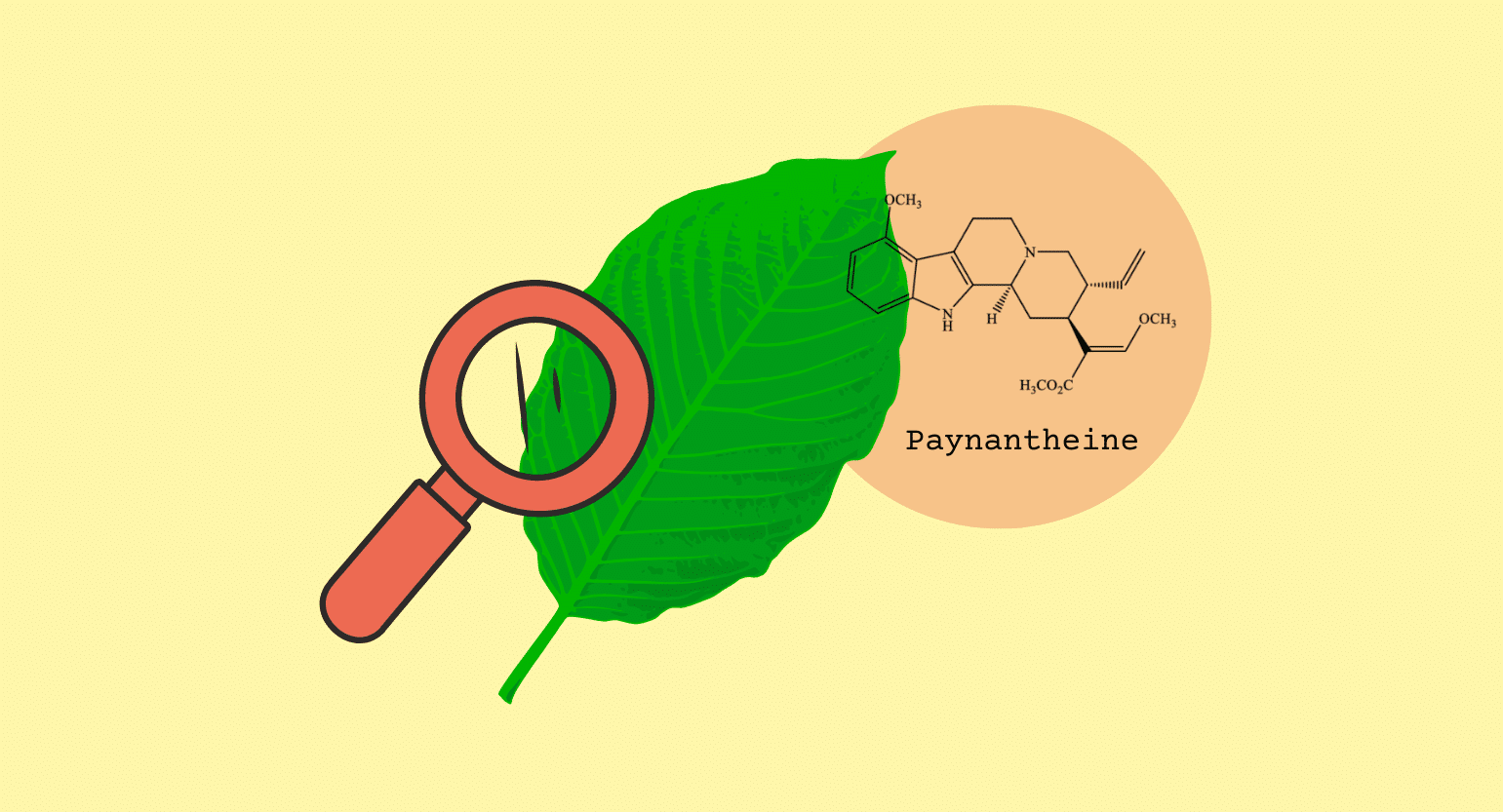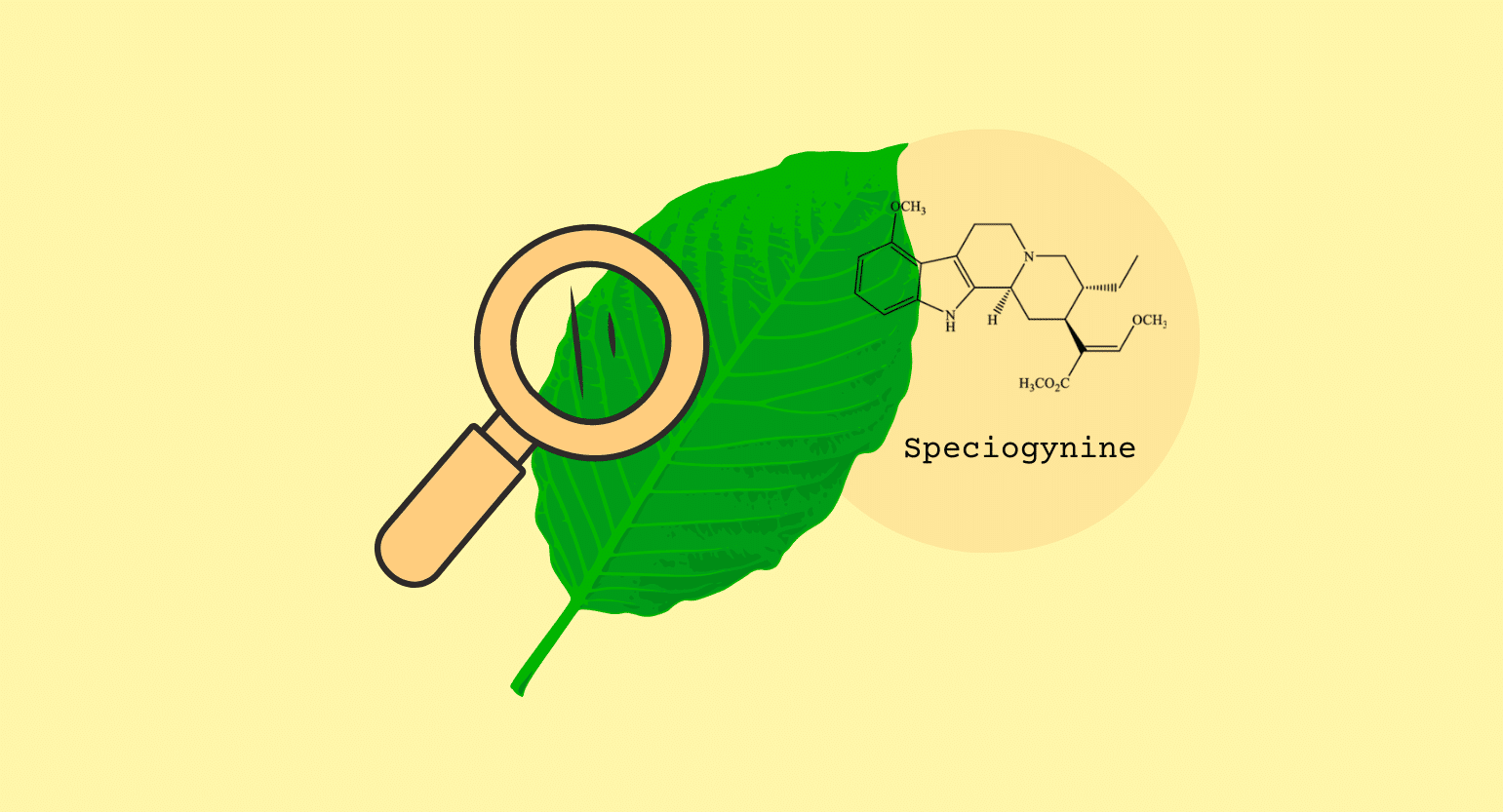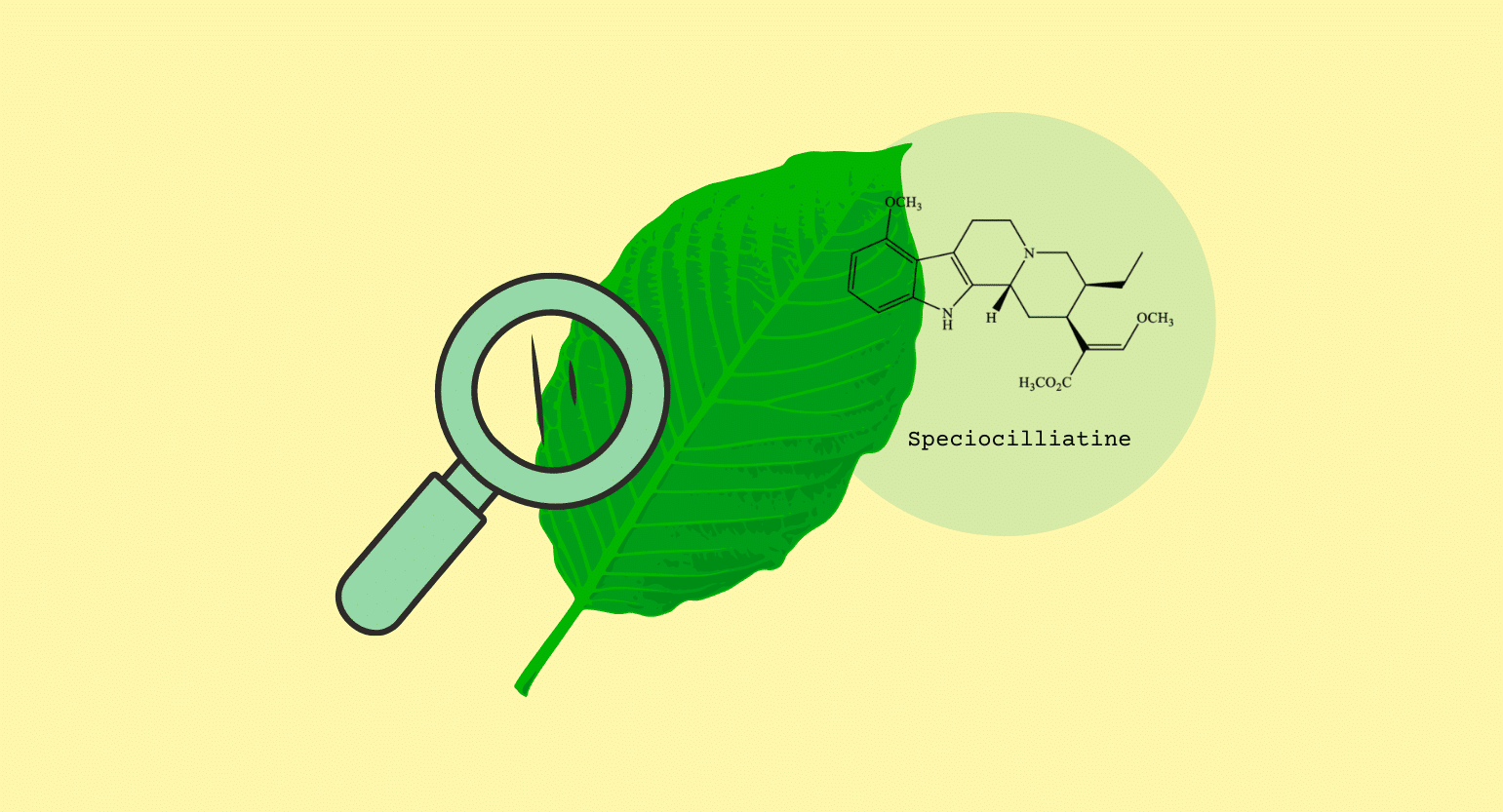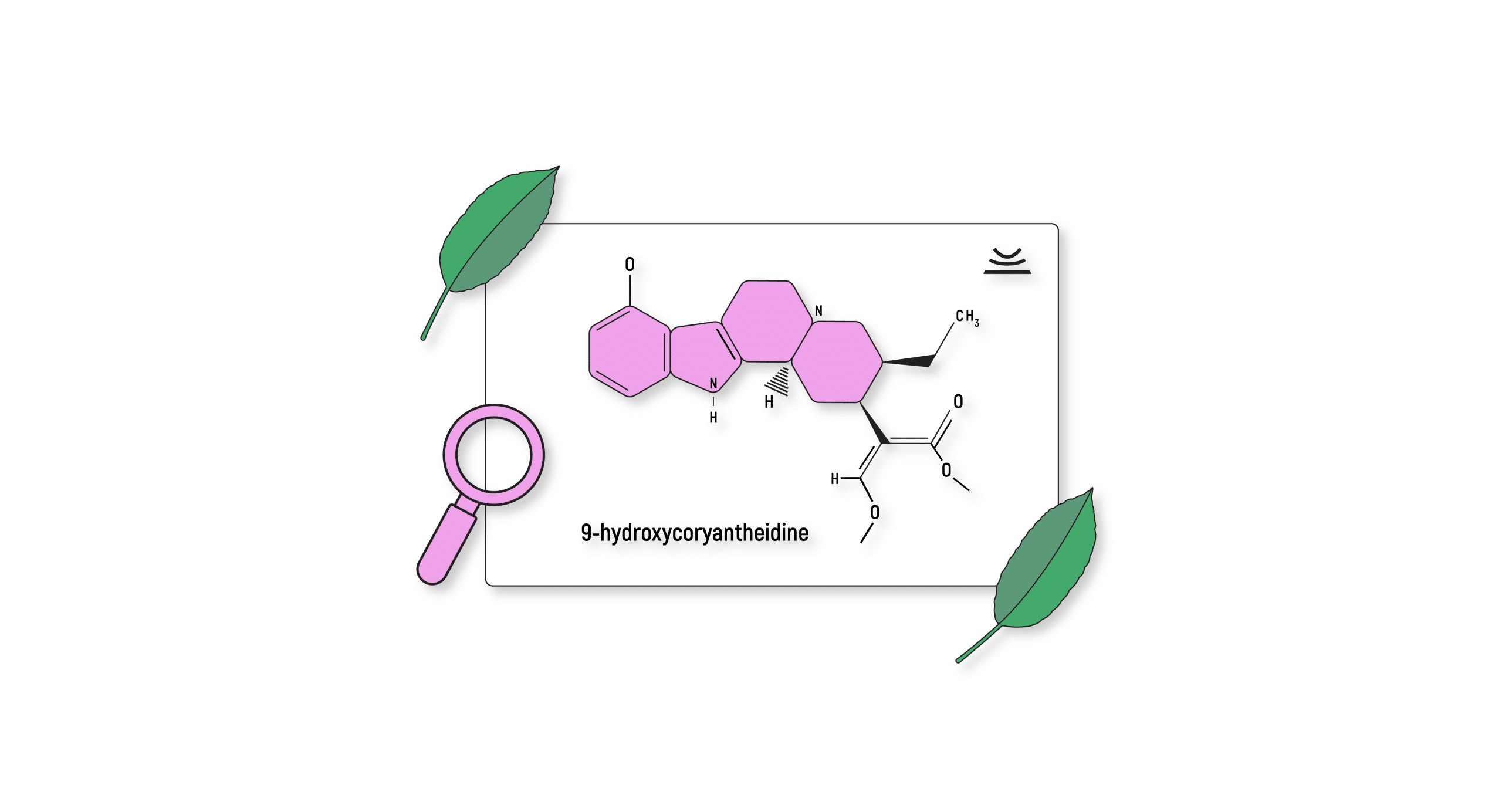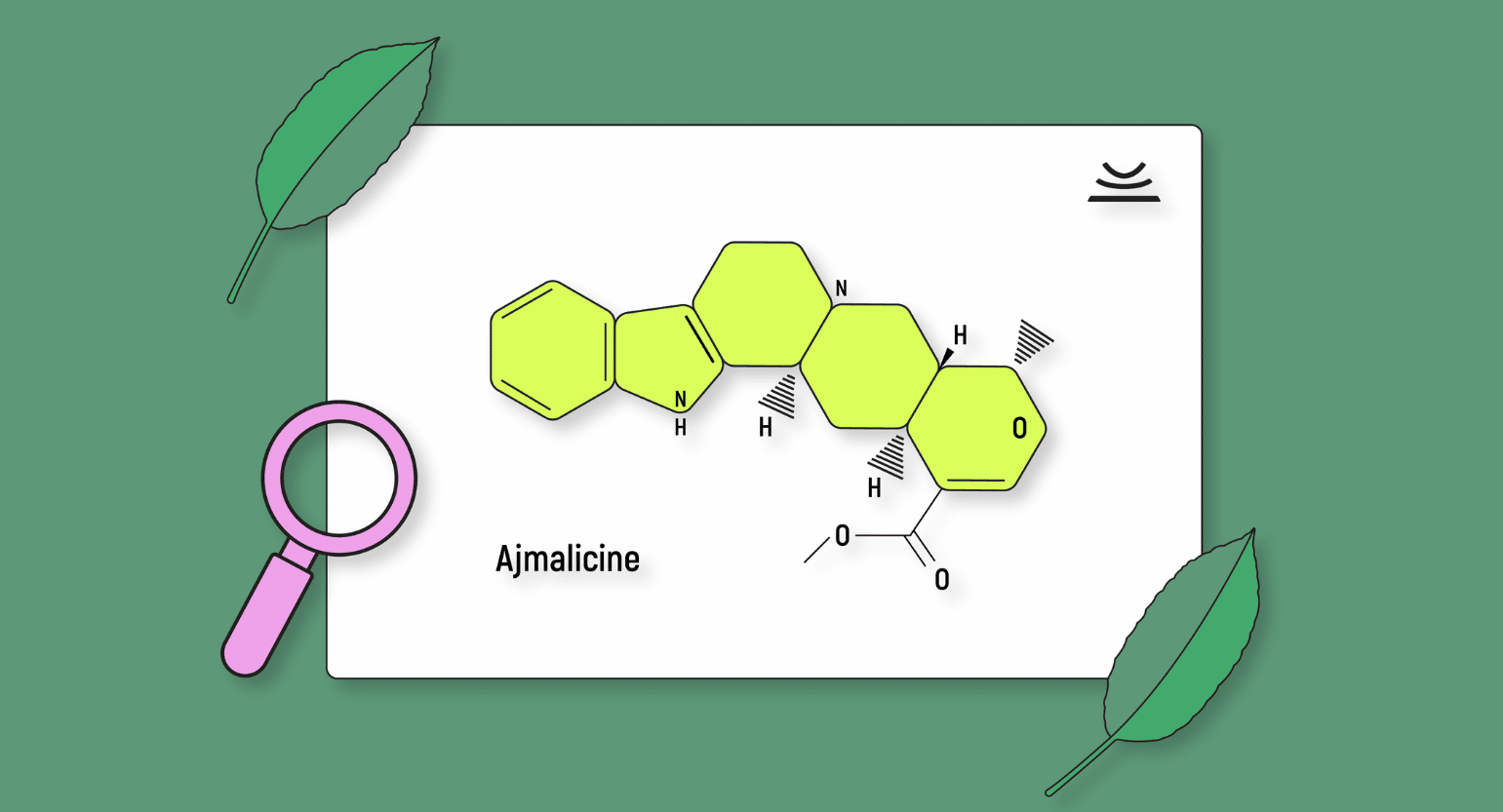What Is Corynoxine?
Corynoxine is one of many different alkaloids that appear naturally in the kratom plant, Mitragyna speciosa. The term “alkaloid” is a broad one that refers to a chemical containing nitrogen and having a physiological impact on humans when consumed.
The purpose of corynoxine for the kratom tree is unknown. However, it’s possible that the aromatic ring in its molecular structure contributes some type of pheromonal advantage to the plant, either as a defense mechanism or as a means of attracting pollinators.
Where Does Corynoxine Come From?
Corynoxine comes primarily from the kratom tree, although it is in kratom leaves in small quantities. It’s also present in some flowering plants belonging to the macrophylla cultivar.
Which Kratom Strains Are Highest in Corynoxine?
Unfortunately, research on corynoxine is lacking, especially when compared to studies surrounding the more prominent kratom alkaloids. As such, it isn’t clear which kratom strains contain the highest levels of corynoxine.
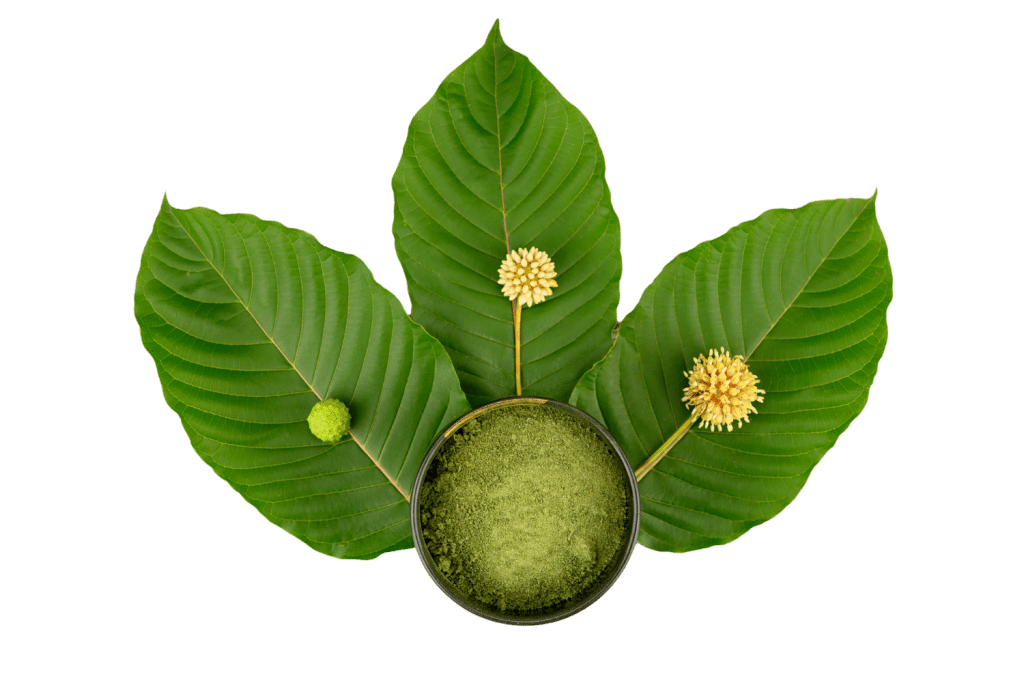
What Does Corynoxine Do & How Does It Work?
To date, relatively little research has been done on corynoxine and its effects on the human body. However, some initial research does suggest that the most notable function of corynoxine is as a neuroprotectant by promoting the clearance of α-syn [4]. This mechanism is being explored as a prophylaxis treatment to ward off Alzheimer’s Disease (AD) [1].
Specifically, corynoxine is known to decrease levels of amyloid-beta peptides, the accumulation of which is linked to medical issues like Alzheimer’s and dementia [2, 3]. As such, corynoxine could play some role in maintaining mental health, especially in aging individuals.
What Other Plants Contain Corynoxine?
Corynoxine is produced naturally by several plants, including Mitragyna speciosa (kratom), Uncaria rhynchophylla (cat’s claw), and Hoya macrophylla (a variety of wax plant).
Is Corynoxine an Opiate?
No. Like all other alkaloids contained within kratom, corynoxine is not an opiate. There is no evidence to suggest that corynoxine interacts with opioid receptors in the human body.
Related: Is Kratom An Opioid?

Is Corynoxine Safe?
Given the lack of research surrounding corynoxine, the safety of this compound as a standalone alkaloid is unknown. However, kratom is considered relatively safe, so the corynoxine that you’d consume when taking kratom isn’t regarded as dangerous.
Side Effects of Corynoxine
Although kratom — and, by extension, corynoxine — is considered relatively safe, it is essential to use the herb responsibly. For most users, this means limiting intake to around five days a week and taking an entire week off at least once a month. Ignoring these recommended guidelines can result in some unwanted side effects, including:
Addiction is the most severe potential side effect of kratom, but risks are drastically reduced by following the guidelines above.

How Much Corynoxine Should I Take?
Taking corynoxine alone isn’t possible, as the alkaloid isn’t typically isolated from kratom. For most users, taking kratom powder will be necessary if they wish to get the benefits of corynoxine. As such, you can follow the guidelines below based on your desired effects. All reasonable doses will only result in minimal volumes of this alkaloid.
- 1 to 3 grams for stimulation and improved focus
- 3 to 6 grams for relaxation or relief from mild pain
- 6 to 8 grams for sedation or relief from severe pain
How Long Do the Effects of Corynoxine Last?
It’s unclear how long corynoxine remains in the body or how long the effects of the alkaloid last. The effects of kratom last between one and five hours for most users. Larger doses tend to lead to longer-lasting effects.

Wrapping Up: The Potential of Corynoxine
While minimal research has been dedicated to corynoxine, it shows promise as an alkaloid that could ward off Alzheimer’s and related ailments. It acts as a neuroprotectant that can induce the autophagy of amyloid-beta peptides, which are linked to various issues.
Most users take corynoxine via kratom powder. A dose between 1 and 3 grams will provide small amounts of the alkaloid along with feelings of stimulation. Moderate doses between 3 and 6 grams will provide more corynoxine and relaxation, and high doses will contain the most and can induce sedation and pain relief.
- De la Fuente-Fernández, R. (2006). Impact of neuroprotection on incidence of Alzheimer’s disease. Plos one, 1(1), e52.
- Durairajan, S. S. K., Huang, Y., Chen, L., Song, J., Liu, L., & Li, M. (2013). Corynoxine isomers decrease levels of amyloid-β peptide and amyloid-β precursor protein by promoting autophagy and lysosome biogenesis. Molecular Neurodegeneration, 8(1), 1-2.
- Longo, F. M., & Massa, S. M. (2004). Neuroprotective strategies in Alzheimer’s disease. NeuroRx, 1(1), 117-127.

